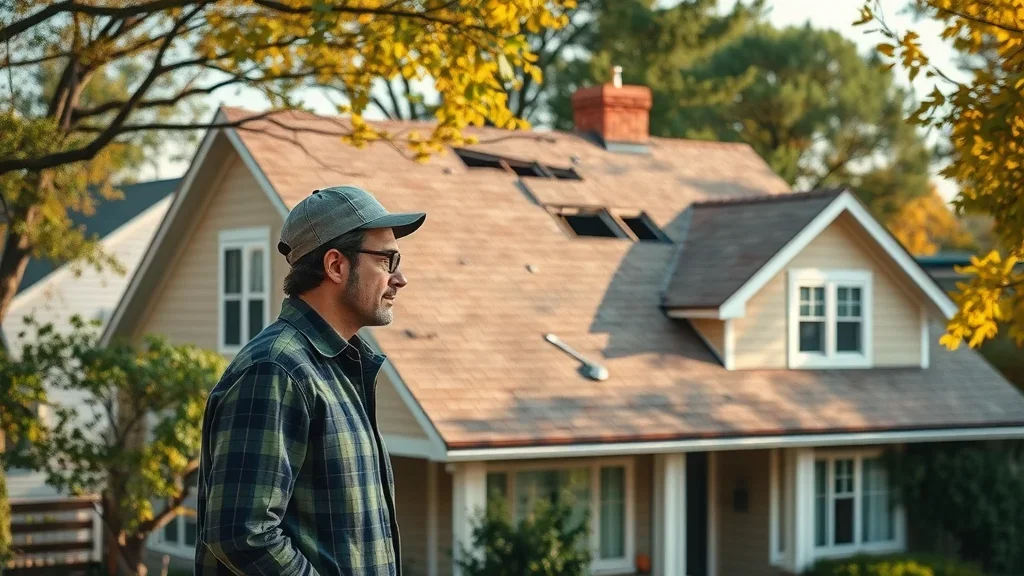Did you know that regeneratively managed soil can store up to three times more carbon than conventionally farmed soil? This article explores how regenerative farming revolutionizes soil health, offering far-reaching benefits to both the environment and your food.

A Startling Look at Regenerative Farming’s Impact
Regenerative farming has emerged as a transformative solution to today’s agricultural challenges, leaving a remarkable imprint not only on the land but also on the environment and the global food system. By prioritizing soil health and ecosystem services, regenerative agriculture practices reverse years of soil depletion, decrease greenhouse gas emissions, and restore the land’s natural fertility. Unlike conventional agriculture, which often exhausts soil and depends heavily on chemicals, regenerative ag maximizes organic matter and biodiversity—leading to healthier crops, higher nutrient density, and a marked improvement in carbon sequestration.
This shift is especially important as climate change intensifies and the pressure mounts on food systems worldwide. Through management practices like cover crops, diverse crop rotation, and minimal soil disturbance, regenerative farmers are building resilient, efficient, and sustainable agricultural systems. As a result, the movement does more than just improve yield; it shapes an eco-friendly future, making your food both better for you and the planet.

What You'll Learn About Regenerative Farming
- How regenerative farming improves soil health and boosts carbon sequestration
- The differences between regenerative agriculture and conventional agriculture practices
- Impact of regenerative ag on climate change and greenhouse gas emissions
- Key regenerative farming techniques like cover crops, crop rotation, and reduced soil disturbance
- Real-life stories and expert opinions highlighting regenerative farm success
Understanding Regenerative Farming: A Foundation
What is Regenerative Farming?
Regenerative farming, sometimes called regenerative ag or regenerative agriculture, is a holistic agriculture practice aimed at restoring and enhancing the vitality of the land. Instead of focusing solely on maximizing short-term crop yield, regenerative farming emphasizes long-term soil health, encouraging biodiversity, promoting ecosystem services, and improving the natural resource base on which agriculture depends.
What makes these agriculture practices different is their emphasis on symbiotic relationships within the soil, such as those between plant roots, soil microbes, and beneficial insects. Techniques like cover crop implementation, diversified crop rotation, and the integration of livestock all combine to rejuvenate the earth—leading to healthier soil and more resilient farms that can better withstand erratic weather, pests, and disease.
The result is an agricultural system that not only results in robust food production but also acts as a powerful lever for addressing climate change, reducing greenhouse gas emissions, and protecting future food security.

Table: Conventional vs. Regenerative Agriculture Practices
| Practices | Conventional Agriculture | Regenerative Agriculture |
|---|---|---|
| Soil Health | Often Depleted | Enriched and Restored |
| Crop Rotation | Limited | Diverse Rotations |
| Cover Crops | Rarely Used | Widely Used |
| Carbon Sequestration | Minimal | Actively Enhanced |
| Greenhouse Gas Emissions | High | Lowered |

Core Principles of Regenerative Agriculture
Enriching Soil Health Through Regenerative Farming
One of the foundational principles of regenerative farming is enriching soil health. Regenerative agriculture practices are designed to restore nutrients, enhance soil structure, and create an environment teeming with beneficial soil microbes and earthworms. By increasing organic matter in the soil through methods like composting and returning crop residues to the land, regenerative farms create the ideal conditions for robust root systems and thriving crops.
This healthy soil foundation leads to more resilient and adaptable farms that can better withstand the pressures of a changing climate—such as drought, flooding, or emerging pests. The improvement in soil health also supports better water retention, reducing irrigation demands and lowering the risk of soil erosion. The cycle of improvement established by these practices makes food systems more dependable and nutritious, benefiting both producers and consumers.

The Role of Cover Crops and Crop Rotation
- Planting cover crops during off-seasons prevents erosion and adds organic matter.
- Diverse crop rotation disrupts pest cycles and maintains healthy soil.
Cover crops and crop rotation are the backbone of regenerative practice. Cover crops like clover, rye, and vetch are sown between main crop cycles or during fallow seasons to keep the soil covered and protected. These living plants not only prevent soil erosion, but they also increase organic matter and attract beneficial pollinators. Meanwhile, rotating different cash crops from season to season interrupts pest and disease cycles, naturally managing threats without chemical intervention.
This combination of cover crops and diverse rotations boosts the availability of nutrients for subsequent crops and promotes a balanced, self-sustaining agricultural system. Such management practices set regenerative farms apart from traditional operations, where monoculture and bare soil are the norm.

Reducing Soil Disturbance and Promoting Carbon Sequestration
Minimizing soil disturbance through practices like no-till or low-till farming is another pillar of regenerative agriculture. Unlike traditional systems reliant on frequent plowing, regenerative ag keeps the living soil structure intact, fostering thriving microbial communities and reducing carbon loss. Maintaining continuous ground cover with cover crops and mulches not only helps to prevent erosion but actively encourages carbon sequestration—drawing carbon dioxide from the atmosphere and locking it in the soil as organic matter.
This process is a critical tool in our fight against climate change, as the agricultural sector increasingly seeks to lower its carbon footprint. By turning farmland into a "carbon sink," regenerative farms both mitigate greenhouse gas emissions and contribute to a healthier, more resilient food system.
Regenerative Farming vs. Traditional Agriculture
- Regenerative ag focuses on long-term ecosystem balance, whereas conventional agriculture emphasizes immediate yield.
- Regenerative agriculture practices reduce reliance on synthetic inputs, restoring the land’s natural fertility.
The contrast between regenerative farming and traditional, conventional agriculture is stark. While conventional practices chase fast crop yields through the heavy use of synthetic fertilizers, pesticides, and single-crop fields, the results are often depleted soils, increased pollution, and higher greenhouse gas outputs. In contrast, regenerative ag centers on long-term sustainability, restoring nature’s processes and promoting balance within the ecosystem. This helps build resilient food systems capable of supporting future generations.
Another key aspect is that regenerative agriculture drastically reduces dependency on chemicals, instead harnessing natural processes for fertility and pest management. This shift not only leads to healthier food but also protects natural resources and reduces agriculture’s contribution to climate change. Farms making this transition often find themselves as stewards of the land, responsible for both immediate productivity and the well-being of the ecosystem.

Benefits of Regenerative Farming for Soil and Climate
Enhancing Soil Health and Organic Matter
Healthy soil is at the core of robust, sustainable food production. Under regenerative agriculture, practices like mulching, composting, and crop layering significantly boost the soil’s organic matter and fertility. This revitalized soil structure enhances water retention, meaning crops are more resilient during dry spells and less prone to diseases. Over time, regenerative farming leads to stronger root systems, increased nutrient density, and a natural resistance to pests—strengthening farm output while reducing external inputs and costs.
By prioritizing healthy soil, farmers ensure future generations have access to productive land, while consumers benefit from more nutritious food and a more secure food system. This symbiotic relationship between soil health and food security is a fundamental advantage of regenerative practice.
Boosting Carbon Sequestration and Addressing Climate Change
A key environmental benefit of regenerative farming is its remarkable capacity for carbon sequestration. By storing carbon in the soil, these practices dramatically reduce the concentration of carbon dioxide—a major greenhouse gas—in the atmosphere. This shift directly supports global efforts to slow climate change and helps farmers become solution providers in the climate crisis.
The methods that enhance carbon sequestration, such as planting cover crops, minimizing tillage, and applying organic matter, are simple yet profoundly effective. Participating in this eco-friendly movement means your food choices and farming support planetary health, not just local yields.

Regenerative Ag in Action: Profiles of Regenerative Farms
- Case study: A regenerative farm in Iowa improves soil health through intensive cover cropping and no-till methods.
- Testimonial from an Australian regenerative farmer reducing greenhouse gas impact through crop rotation and organic practices.
Stories from real-world regenerative farms highlight the measurable benefits of these practices. For example, a farm in Iowa implemented a combination of cover crops and no-till farming, resulting in dramatic increases in soil organic matter and resilience to extreme weather. Improved water holding capacity led to higher crop yields even during challenging seasons, demonstrating the power of healthy soil as an economic advantage.
Similarly, in Australia, one regenerative farmer adopted extensive crop rotation and eliminated synthetic inputs. This not only reduced the land’s greenhouse gas emissions, but also created a cascade of benefits—enhanced soil health, more biodiversity, and a thriving food production system that supports both human health and environmental stewardship.
Quote
"The soil is the great connector of lives... without proper care for it we can have no life." – Wendell Berry
Addressing Skepticism and Common Misconceptions
Why Are Some Farmers Against Regenerative Farming?
Despite the compelling environmental and economic benefits, not every farmer rushes to embrace regenerative agriculture practices. Key concerns involve the costs—financial investment in new equipment or cover crop seed, for example—as well as uncertain short-term returns during the transition period. Many farmers are also apprehensive about adopting unfamiliar techniques or programs without adequate training, fearing negative impacts on immediate crop yield or profitability.
There’s also a cultural component, particularly in regions with a long tradition of intensive, conventional practices. Nevertheless, as more success stories and research emerge, demonstrating long-term profitability and environmental gains, the tide is slowly turning, and adoption of regenerative farming is growing worldwide.

Is Regenerative Farming Good or Bad for Food Production?
When evaluated over the long term, regenerative farming not only maintains but frequently increases food production. Improvements in soil health, water retention, and ecosystem resilience combine to produce steadier crop yields, year after year. Additionally, the crops themselves tend to be more nutrient-dense, benefitting both the grower and the consumer.
Instead of degrading the land for short-term profit, regenerative farms work in harmony with nature, building up soil fertility and boosting the sustainability of every harvest. As evidence accumulates in support of this approach, the scientific and agricultural communities alike are advocating for widespread adoption as a means to ensure ongoing food security and land stewardship.
From Theory to Practice: Steps to Implement Regenerative Farming
- Assess soil health and establish baseline organic matter.
- Integrate diverse cover crops tailored to your climate and crops.
- Adopt minimal tillage or no-till practices to reduce soil disturbance.
- Rotate crops to promote biodiversity and sustainability.
- Monitor soil health improvements and adapt methods as needed.
Beginning the journey to regenerative farming can feel overwhelming, especially for those new to ecosystem-focused management. The above roadmap provides a practical starting point: begin by testing and understanding your soil’s current status, then gradually layer in new practices such as cover cropping, crop rotation, and reduced tillage. Monitoring outcomes and remaining flexible allows farmers to find the best fit for their land, weather patterns, and local markets.
These incremental steps not only improve soil health and productivity but also future-proof the farm against environmental and economic uncertainty. Transitioning with support from local experts, agricultural extension services, and regenerative farming networks can smooth the path to long-term sustainability.

People Also Ask
What is regenerative farming?
Regenerative farming is a comprehensive set of agriculture practices designed to restore soil health, increase biodiversity, and capture carbon from the atmosphere—helping both the environment and the food system. Unlike conventional approaches, it builds soil organic matter and encourages nature’s own processes to maintain productivity.
Why are farmers against regenerative farming?
Resistance from some farmers often stems from barriers like resource limitations, the perceived costs of making changes, and skepticism about returns. Yet, as proof of long-term economic and environmental gains continues to increase, interest and adoption are also growing.
Is regenerative farming good or bad?
Most experts agree that regenerative agriculture offers substantial advantages—including healthier soil, improved crop yields, and better environmental outcomes—though transitioning can pose short-term challenges. The practice is increasingly seen as a pathway to both profitable and responsible farming.
How is regenerative farming different from regular farming?
Regenerative farming differs by prioritizing ecosystem restoration over resource extraction. It enhances soil health and locks in carbon sequestration, utilizing rotation, reduced tillage, and cover crops, whereas regular farming often exhausts natural resources for immediate gain.

Expert FAQs On Regenerative Farming
- How does regenerative farming increase carbon sequestration?
- Which cover crops provide the greatest benefit?
- What are the most impactful regenerative agriculture practices for soil health?
Key Takeaways: Why Regenerative Farming Matters
- Regenerative farming leads to more resilient and productive soils.
- It is a powerful tool in combating climate change through carbon sequestration.
- The practice fosters ecosystem health and food security for future generations.
Conclusion: The Future is Regenerative
Transitioning to regenerative farming isn’t just a trend—it’s a pivotal shift toward eco-friendly living that supports the health of our planet and future food supply.

Inspire Change: Join the Regenerative Farming Movement
Become part of the regenerative revolution. Consider adopting eco-friendly agriculture practices, support regenerative farms, and advocate for healthier soils and a brighter planet.
Watch real farmers demonstrate key regenerative farming techniques, showcasing their impact on soil health and climate resilience.
Experience a visual journey through before-and-after footage that captures the dramatic transformation enabled by regenerative farming practices.
Regenerative farming offers a multitude of benefits, including improved soil health, increased biodiversity, and enhanced carbon sequestration. For a comprehensive understanding of these advantages, the Chesapeake Bay Foundation’s article, Regenerative Agriculture, provides detailed insights into how these practices contribute to environmental sustainability and farm productivity. Additionally, the Natural Resources Defense Council’s piece, Regenerative Agriculture 101, explores the ecological and economic impacts of regenerative farming, highlighting its role in fostering resilient agricultural systems. If you’re serious about adopting sustainable farming methods, these resources will offer valuable guidance and information.
 Add Row
Add Row  Add
Add 



Write A Comment